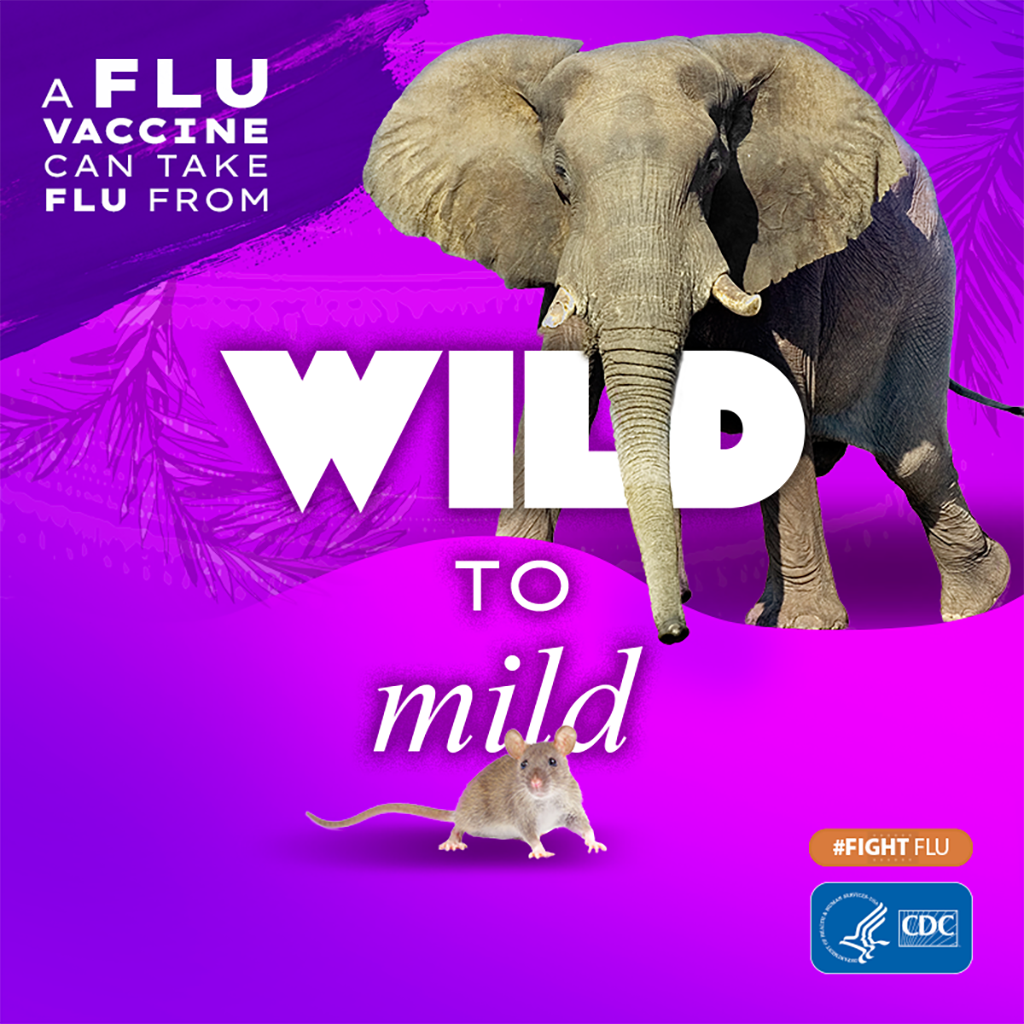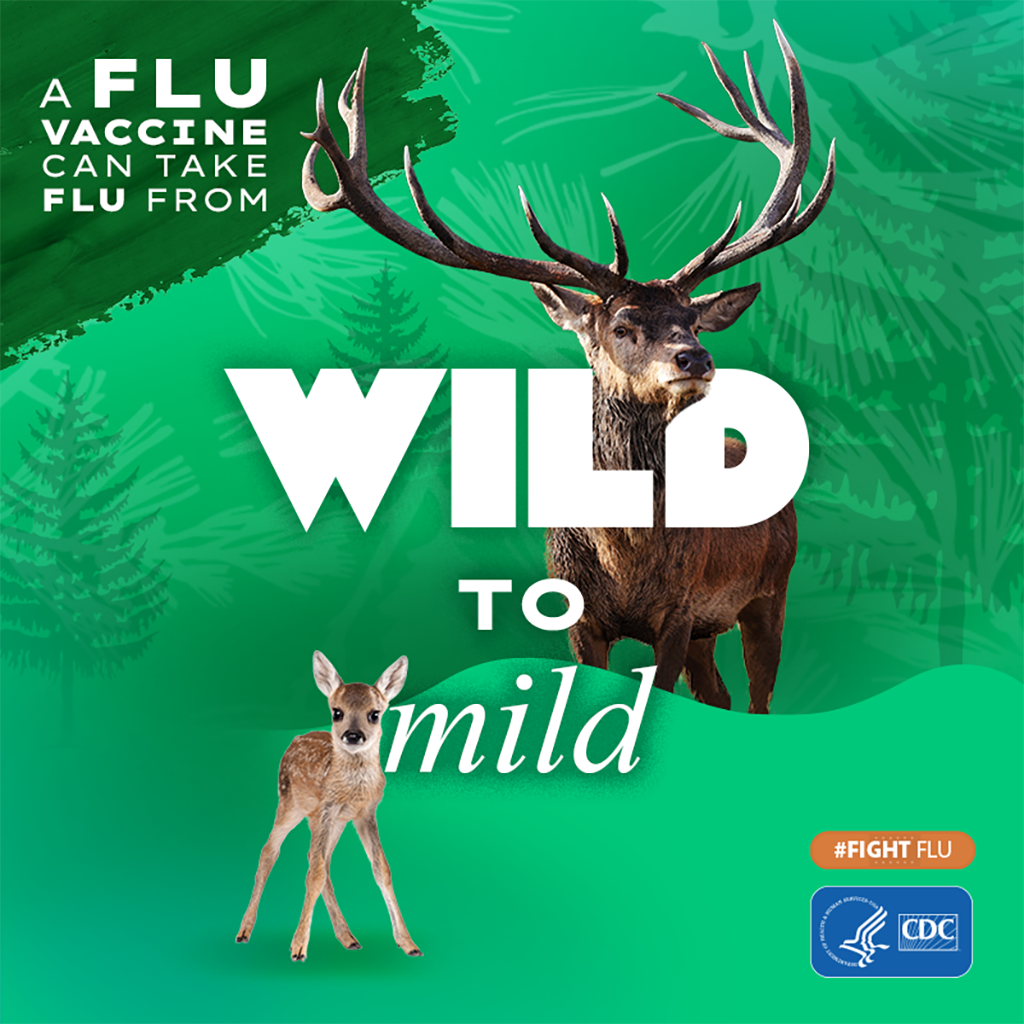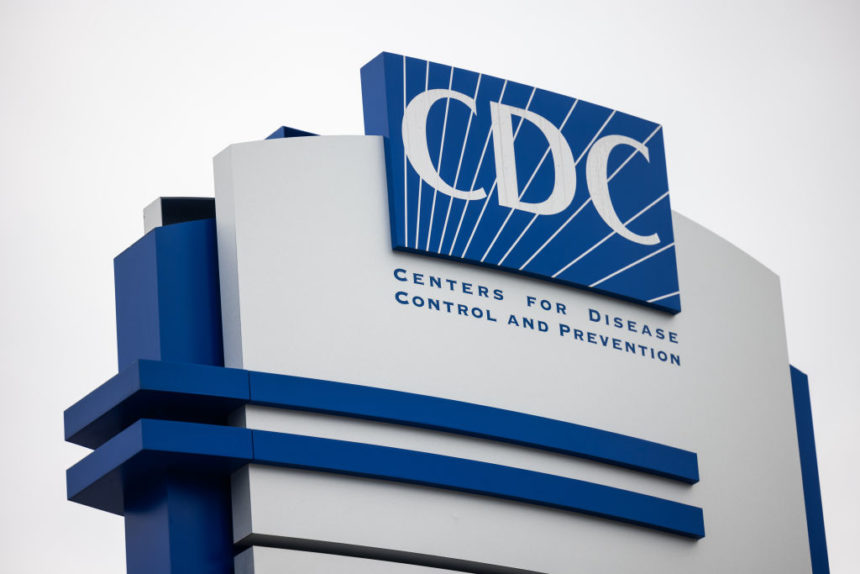The post-pandemic vaccination fatigue is real and the statistics back it up.
The number of people getting vaccinated against COVID-19 has declined since its peak in 2021 and flu vaccinations have also fallen, specifically among pregnant women and young children.
In particular, the last three years brought a 15% drop in vaccination coverage among pregnant people, and about a 5% drop among children, according to recent data from the Centers for Disease Control and Prevention (CDC).
Now, the agency is aiming to reverse that trend with its Wild to Mild campaign launched Monday morning. The effort seeks to encourage vaccine-hesitant people to get a flu shot — even if breakthrough infections are possible.
That’s because flu vaccines, while not always guaranteed to prevent people from contracting the flu, are pretty reliable in reducing serious illness, hospitalization and death, according to Erin Burns, associate director of communications for the influenza division at the CDC.

“Seeing these drops in coverage has been concerning for the CDC,” Burns explained. “When we were going into the campaign for this season, it was clear from looking at the data that we needed to reach these two groups of people, see what was going on and do whatever we could to reverse that trend.”
The CDC chose to focus on pregnant women and children because both groups tend to have a higher risk of serious complications. Pregnant women face a weakened immune system, and flu is associated with certain negative birth outcomes, like low birth weight or preterm delivery.
Public health experts also say that getting vaccinated against the flu during pregnancy can ensure the baby is born with antibodies against the flu for the first few years of their life.
To design the campaign, the CDC first had to determine the reasons behind the vaccination decline. In consumer focus groups, they dug into how people felt fatigued about receiving vaccinations post-pandemic and how during the height of COVID-19, flu cases dropped significantly, making people less inclined to get a shot.
“There were also some long-held misconceptions that have gained more of a foothold among the general populations, such as the idea that vaccination is not safe, or people not wanting to put anything foreign in their bodies,” Burns said. “With the flu vaccine specifically, there was the perception that it doesn’t work. So the takeaway from the public is, ‘Well, I got vaccinated and I still got sick.’”
When it comes to its name, the campaign took a play on the idea of making the virus go from “wild to mild.” To that end, the CDC has marketing materials comparing and contrasting wild animals with their cuter, more benign counterparts, such as a grizzly bear next to a teddy bear, or a tiger next to a kitten.

“Taking that piece of information helped us figure out a way to reframe the discussion around flu vaccine and to reset the expectations about what it could do,” Burns said. “The message there is that you might still get sick, but there will be a reduction in illness, a reduction in the time that you’re sick and in the severity of your illness.”
In addition to a drop in pregnant women and children, significant disparities in flu vaccination coverage remain among different ethnic and racial groups, as well as geographic location. Black and Hispanic Americans are less likely to be vaccinated than their white counterparts and rural areas have lower vaccination rates than urban areas.
Additionally, a separate campaign done in partnership with the American Medical Association and the Ad Council – No Time for Flu – prioritizes patients in more rural areas and seeks to improve outreach to Black and Hispanic populations.
In a broader sense, the CDC is still working on redefining its communications footing as a public health authority following the tumult of the COVID-19 pandemic. Over the past three years, the agency sustained widespread criticism that it fumbled its external communications strategy.
The Wild to Mild campaign is part of the CDC’s greater effort to build back the nation’s trust in how it communicates science and messages on matters of public health. This push was informed by feedback from consumer focus groups that expressed the messaging felt “truthful,” Burns said.
“We’re in a place where we’re trying to regain reputation,” Burns said. “Part of that, in a campaign like this one, is being transparent about what the flu vaccine may not do, but also what it can do. [People felt like], ‘This makes me feel better about the CDC because I feel like they are being transparent and delivering a message that is truthful.”
She added that a factor in the organization’s decision-making was the need to “reposition the agency overall” to regain some of the trust that might have been lost over the course of the pandemic.
It’s difficult to accurately measure whether a campaign drives up vaccination rates, but the CDC plans to track metrics like audience reach engagements, clicks on digital ads or traffic driven to vaccines.gov going forward.
The campaign will run as digital ad placements, on social media and radio and through micro-influencer collaborations.
“[The ads are] cute and they’re attention-grabbing,” Burns said. “In the consumer groups, when [the ads] would come on screen, you would often see people smile. It does get people’s attention and that’s probably another factor why it tested as well as it did.”







